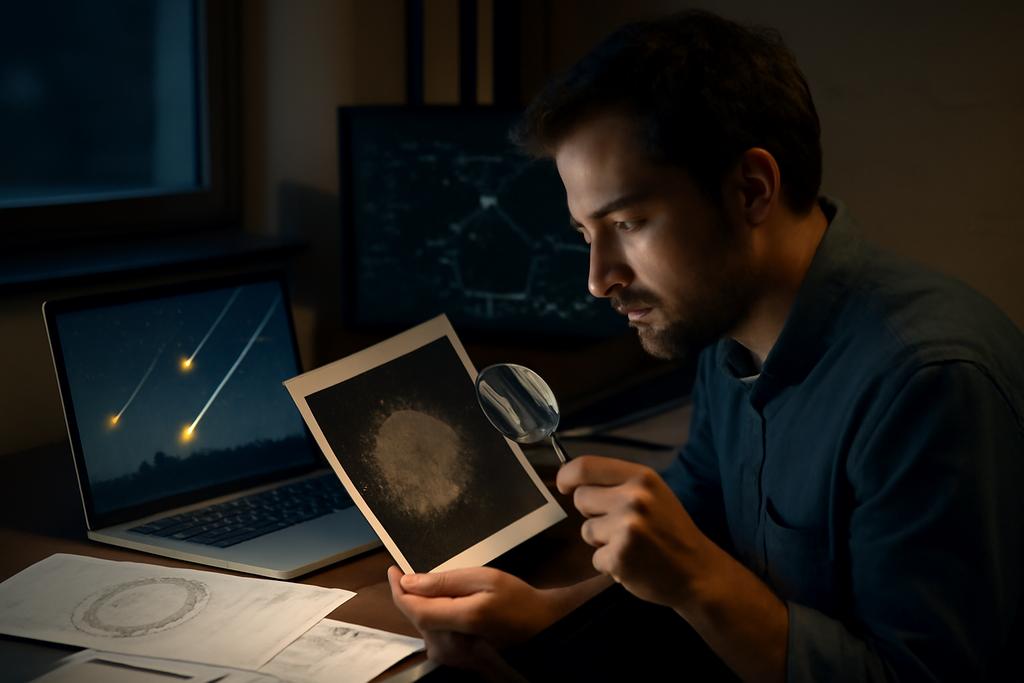The Perilous Hunt for Meteor Showers
Picture this: you’re a meteor scientist, sifting through a mountain of data – millions of meteoroid orbits, each a tiny cosmic fingerprint. Your goal? To identify meteor showers, those breathtaking celestial displays born from the debris trails of comets and asteroids. The challenge? Distinguishing genuine showers from random clumps of cosmic dust – a task as difficult as finding a needle in a galactic haystack. This is the problem that researchers at the Observatoire de Paris, PSL Research University, Sorbonne Université, Université de Lille, LNE, and CNRS, along with colleagues at ESA and NASA, tackle in their recent paper, ‘Orbit dissimilarity criteria in meteor showers: a comparative review’, led by Ariane Courtot.
The D-Criteria Dilemma
For decades, scientists have relied on what are known as “D-criteria” to tackle this challenge. These criteria are essentially mathematical formulas that assess the similarity between the orbits of two meteoroids. If the calculated dissimilarity is below a certain threshold, the meteoroids are considered part of the same group, a potential meteor shower. But there’s a catch: there are many D-criteria, each with its own quirks and limitations, and few have been rigorously tested. It’s like having a toolbox full of screwdrivers, some rusty, some broken, and others perfectly suited for specific screws. But which one do you choose for the job?
The Southworth-Hawkins Legacy (and its Cracks)
The most widely used D-criterion is the venerable Southworth-Hawkins (DSH) criterion, dating back to 1963. It’s become a workhorse in the field, simple to implement and widely understood. However, Courtot et al.’s review unearths long-standing criticisms. The DSH formula doesn’t always align with our intuitive understanding of what constitutes orbital similarity. It lacks a solid mathematical framework and doesn’t consider the way observational errors affect different orbital parameters. Imagine trying to build a perfect replica of the Eiffel Tower using instructions that are partly vague, partly contradictory, and occasionally wrong. This is akin to relying solely on DSH – a flawed blueprint.
A Plethora of Problems (and Potential Solutions)
The researchers’ review reveals a larger problem: the selection of D-criteria often lacks justification. The chosen threshold value – the line dividing similar from dissimilar orbits – is frequently pulled from previous studies without considering the specific characteristics of the dataset. And the algorithms used to group similar orbits into potential showers vary widely, adding another layer of uncertainty. It’s like building with mismatched Lego bricks – some will fit, but many won’t, leading to an unstable, imperfect structure.
The paper does offer some promising avenues. Using geocentric quantities (orbit parameters as viewed from Earth) rather than heliocentric ones (orbit parameters as viewed from the Sun) is one idea. This approach might minimize the influence of long-term orbital changes and focus on more directly observable characteristics. Another suggestion is to incorporate rigorous statistical testing to ensure that identified groupings aren’t merely due to random chance.
The Need for Dynamical Analysis
Even a perfect D-criterion isn’t a foolproof method for identifying meteor showers. A true meteor shower originates from a single parent body, meaning all meteoroids in the shower share a common source. But D-criteria alone can’t guarantee this. Non-gravitational forces and close encounters between meteoroids can create false groupings that appear similar orbitally but lack a common origin. The researchers emphasize the vital importance of going beyond orbit similarity and using dynamical analysis to model the evolution of meteor streams and confirm a shared origin. This would help separate real meteor showers from spurious groupings, similar to how a forensic scientist uses multiple forms of evidence to solve a crime, rather than relying on a single piece of evidence.
Beyond D-Criteria: A Call for Refinement
The paper isn’t just a critique; it’s a roadmap for improvement. Courtot et al. don’t advocate for inventing new criteria, but for a more thorough evaluation of the existing ones. This includes developing standardized methods for choosing thresholds and algorithms, and performing comprehensive tests to assess the strengths and limitations of each D-criterion under various conditions. It also highlights the need for a thorough statistical analysis of the resulting groupings to ensure the identified groups are statistically significant and not merely due to random chance.
The Bigger Picture
Understanding meteor showers isn’t merely an academic exercise. These events offer crucial clues about the formation and evolution of our solar system. They provide information about the composition and age of comets and asteroids, as well as the dynamics of interplanetary dust. By improving our techniques for identifying meteor showers, we gain a clearer understanding of our cosmic neighborhood – a quest as essential as any other in modern science. This paper is an important call to action within the field, urging a more meticulous and well-tested approach to classifying meteor showers, ensuring our understanding of these magnificent celestial events is as robust and insightful as they are beautiful.










